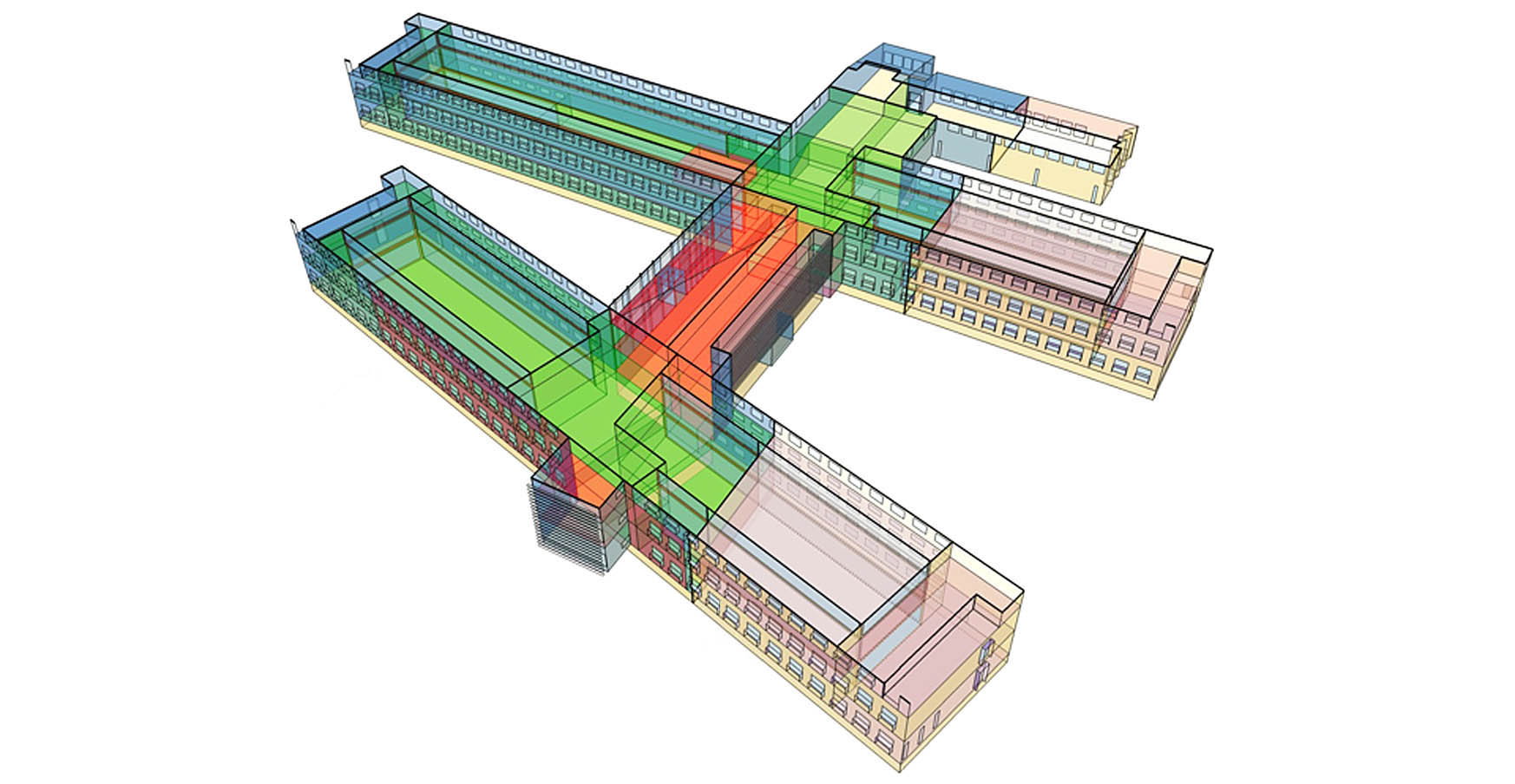Buildings Data and Tools
A leader in building energy modeling and systems analysis, NREL develops, maintains, and distributes a suite of buildings industry-standard platforms and physics-based data.

NREL-Developed Tools
Explore tools developed by NREL buildings researchers for use in building energy planning.
BEopt: Building Energy Optimization
The Building Energy Optimization (BEopt™) tool evaluates single-family detached and multifamily building designs and identifies the most cost-effective whole-house efficiency packages. The tool analyzes new construction and existing home retrofits, evaluating single building designs, parametric sweeps, and cost-based optimizations.
BESTEST-EX: Building Energy Simulation Test for Existing Homes
BESTEST-EX is a test procedure that allows software developers to evaluate their audit tools' performance in modeling energy use and savings in existing homes when utility bills are available for model calibration. The NREL Buildings Research team developed BESTEST-EX to support the larger effort of assessing and improving the accuracy of energy analysis for residential buildings.
BuildingSync
BuildingSync® (hosted off-site) is a standardized data format for building energy audits that simplifies sharing, comparing, and reusing data. The schema allows data to be more easily aggregated, compared, and exchanged between databases and software tools. It streamlines the energy audit process for energy auditors, software providers, building owners, utilities, and other implementors.
foresee
foresee™ uses machine-learning algorithms, advanced data analytics, and physics-based modeling and simulation to derive data-driven appliance models and energy use patterns within a home and predict future energy consumption while coordinating the operation of connected appliances. This secure home automation system takes occupants' personal habits and priorities into account and automatically creates energy-saving scenarios homeowners can comfortably implement.
OCHRE: Object-Oriented Controllable High-Resolution Residential Energy Model
OCHRE™ is a residential energy model designed for advanced controls, optimization, and cosimulation. It includes controllable models for HVAC equipment, water heaters, electric vehicles, solar PV, and batteries. Its control features, high-resolution modeling, and electrical characteristics are suited for modeling residential demand-side management in grid-interactive efficient buildings. OCHRE is python-based and integrates with NREL tools including foresee, BEopt, ResStock, and HELICS.
OpenStudio Analysis Framework
The OpenStudio® Analysis Framework makes the creation of large-scale datasets for artificial intelligence/machine learning optimization and parametric analysis of building energy models accessible to architects, engineers, designers, and policymakers. Open-source and scalable to facilitate wider adoption, the framework has a clearly defined application programming interface that other applications can be built upon. It runs on everything from major cloud infrastructure to laptops, and uses a common workflow to enable different classes of algorithms. Private sector and government organizations have used it successfully, either through their existing algorithmic and visualization capabilities or linking the large-scale simulation results to external visualization and analytic tools.
URBANopt
URBANopt™, a first its kind open-source, modular software development kit for modeling districts, neighborhoods and campuses, is fueling innovation for integrated district-scale energy solutions. URBANopt is built on top of OpenStudio and EnergyPlus® to enable multi-building district-scale modeling; includes capabilities for modeling thermal energy networks and waste heat recovery; and manages integrated workflows between building modeling and grid/distributed energy resource modeling tools to enable the development of cross-sector solutions that reduce costs and improve resilience and reliability.
U.S. Department of Energy and National Labs Tools
Check out tools developed by the U.S. Department of Energy and its national labs to help facilitate building energy planning and research.
EnergyPlus
EnergyPlus is a state-of-the-art open-source building energy modeling (BEM) simulation engine. It provides the detailed and validated physics-based algorithms needed by building designers and researchers to accurately model whole-building system energy performance to inform integrated design, early-stage and advanced R&D, standards, policy, and investment decision-making. The EnergyPlus simulation software provides a robust and reliable simulation engine that can be embedded inside critical workflows, ensuring it meets the requirements of researchers, designers, users, and policymakers.
OpenStudio
The OpenStudio platform is a collection of open-source software tools that brings together physics-based BEM, large-scale computing capabilities, and data science tools to enable a broad range of building energy analysis applications. The platform includes a software development kit for programmatic access to BEM engines including EnergyPlus®, support for scripting and workflow automation called OpenStudio Measures, prototype building models and standards-related model transformations via the OpenStudio Standards gem, and large-scale simulation analyses on local, cluster, and cloud resources via the OpenStudio Server.
SEED: Standard Energy Efficiency Data Platform
The Standard Energy Efficiency Data Platform is an open-source platform designed to manage building characteristics and performance data. The SEED Platform™ eliminates many technical and workflow challenges associated with collecting and managing performance data for large building portfolios. It helps users combine data from multiple sources, clean and validate it, and generate valuable reports. This allows users to implement building performance regulations or track the performance of their portfolios to increase energy efficiency.
Tool Suite
BuildStock represents the U.S. building stock through highly granular modeled datasets that combine multiple data sources, statistical sampling, and detailed building energy simulations. ResStock™ focuses on residential buildings while ComStock™ covers commercial buildings, helping stakeholders analyze energy use and operational cost, evaluate improvement strategies, and identify savings opportunities at multiple geographic scales. The resulting End-Use Load Profiles dataset depicts when and how energy is consumed across building types and climate regions, providing critical time-based insights for energy planning. Utilities, policymakers, manufacturers, researchers, and building owners use these NREL-developed and U.S. Department of Energy-funded resources to evaluate efficiency measures, demand response programs, and distributed energy resources, with data accessible through web viewers, downloadable spreadsheets, and detailed query tools.
Share
Last Updated June 27, 2025
